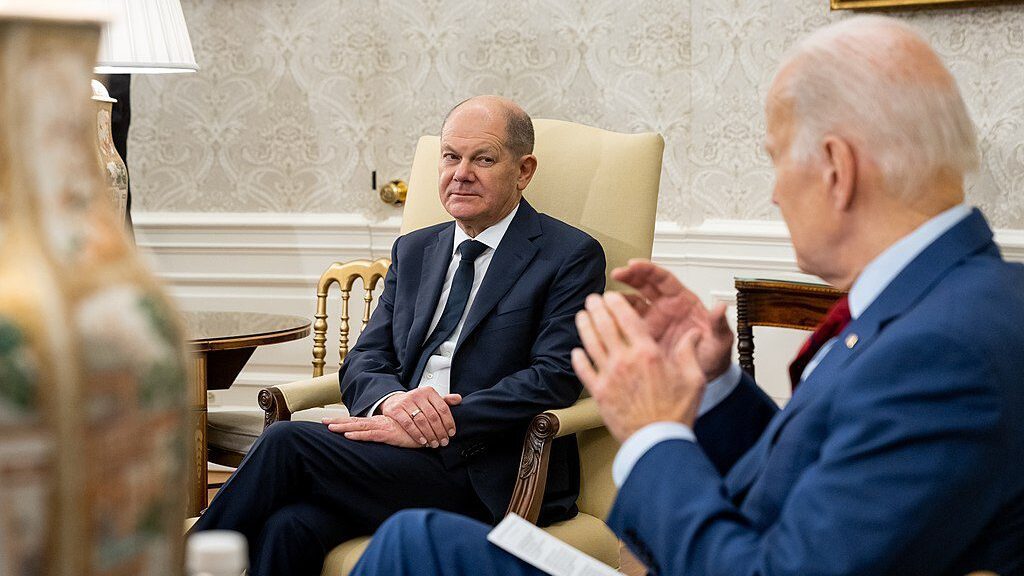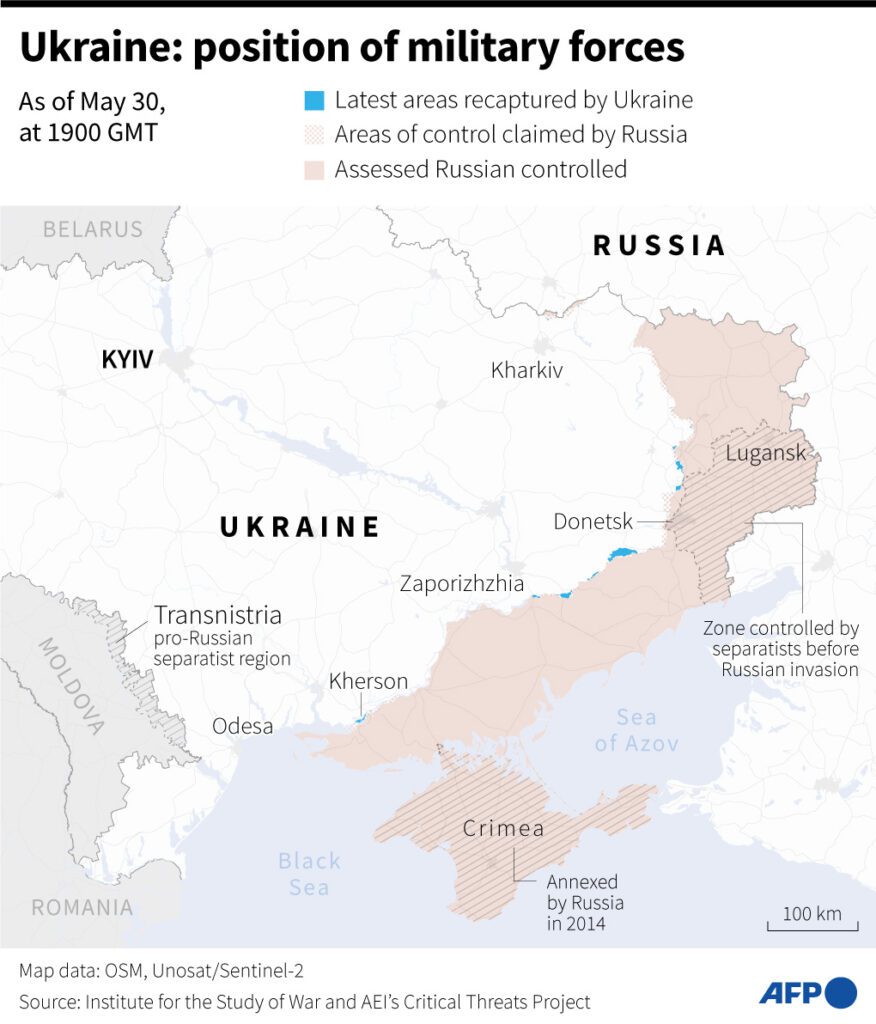
German Chancellor Olaf Scholz and U.S. President Joe Biden
Photo: The White House, Public domain, via Wikimedia Commons
Both the United States and Germany have allowed weapons they supplied to Ukraine to be used against targets inside Russian territory. The two NATO member states have emphasised that their decision applies only to targets inside Russia near the border with the northeastern Ukrainian Kharkiv region, where Moscow launched an offensive a few weeks ago.
U.S. President Joe Biden had been under pressure to authorise the decision, with Ukraine, the Baltic states, the Scandinavian countries, and Britain urging the United States to act. Biden had refused to do so, fearing that NATO could be dragged into a war with Russia, whose president, Vladimir Putin, warned the Western military alliance that they risked the outbreak of nuclear war.
The war between Ukraine and Russia, which started with the Russian invasion more than two years ago, has reached a stalemate in the past year Recently, Moscow launched an offensive against the Kharkiv region, which borders Russia, and Russian troops have made significant territorial gains there. Russian fighter planes flying inside Russia have been supporting the offensive by firing bombs at Ukrainian defence lines and into Kharkiv, reports Reuters.
Joe Biden “recently directed his team to ensure that Ukraine is able to use U.S.-supplied weapons for counter-fire purposes in the Kharkiv region so Ukraine can hit back against Russian forces that are attacking them or preparing to attack them,” said one U.S. official.

The U.S. is the biggest supplier of weapons to Ukraine, and it recently decided to send long-range missiles known as ATACMS to Kyiv. Washington will continue to prohibit the Ukrainian military from using ATACMS, which have a range of up to 300 kilometres, for deep strikes inside Russia.
Germany has also given into pressure, with government spokesman Steffen Hebestreit announcing on Friday that Berlin has given Kyiv permission to use weapons supplied by Germany against military targets in Russia. “We are jointly convinced that Ukraine has the right under international law to defend itself against these attacks,” he said.
German policy on providing weapons has dramatically shifted, with Berlin initially only willing to send helmets to Ukraine at the beginning of Russia’s invasion. Pressure by NATO allies, and from the hawkish Greens within the government, has persuaded Social Democrat Chancellor Olaf Scholz to allow the delivery of anti-aircraft systems and battle tanks. However, Scholz has refused to authorise the supply of long-range Taurus missiles, saying they could be used to hit targets deep inside Russia.
NATO chief Jens Stoltenberg, who is attending the ongoing NATO foreign ministers’ meeting in Prague, downplayed the threat of an escalation of the war. “Ukraine has the right for self-defence, and that includes also the right to strike legitimate military targets inside Russia,” he said on Friday. He added that letting Western weapons hit targets in Russia was “nothing new” as Britain had long sent cruise missiles to Kyiv without restrictions.
French President Emmanuel Macron also said on Tuesday that Ukraine should be allowed to “neutralise” bases in Russia used to launch strikes.
“NATO countries that have approved strikes with their weapons on Russian territory should be aware that their equipment and specialists will be destroyed not only in Ukraine, but also at any point from where Russian territory is attacked,” former Russian president, now deputy chairman of the Russian Security Council Dmitry Medvedev warned on Friday. He said all long-range weapons supplied to Ukraine were already “directly operated by servicemen from NATO countries,” which is tantamount to participation in the war against Russia.
